










BOTRYLLUS & BOTRYLLOIDES
BOTRYLLUS
Botryllus
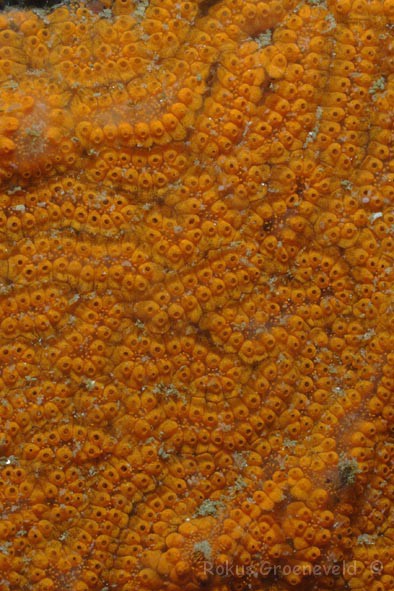
Botrylloides violaceus - typically different shades of orange - zooids arranged in long rows like suburban housing tracts.
Botryllus schlosseri - zooids arranged in small, star-shaped groups with the common atrial opening (excurrent) in the center of each star.
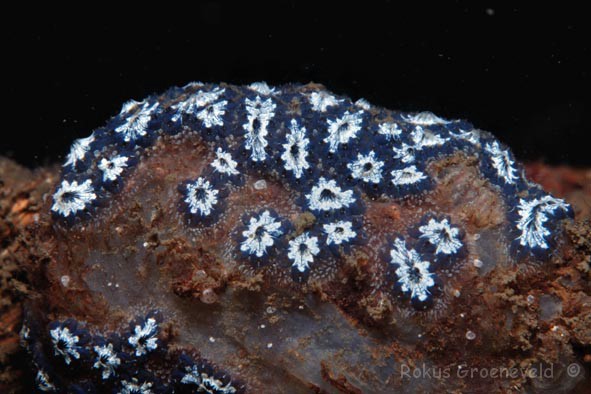
Photo by Rokus Groeneveld www.diverosa.com






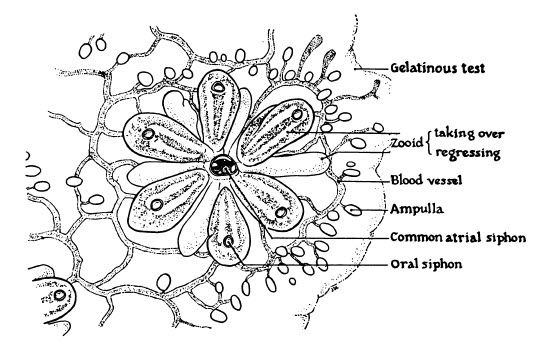
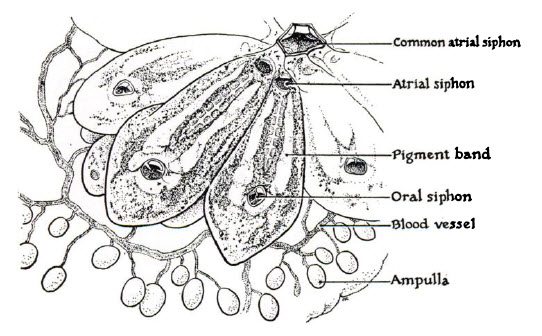
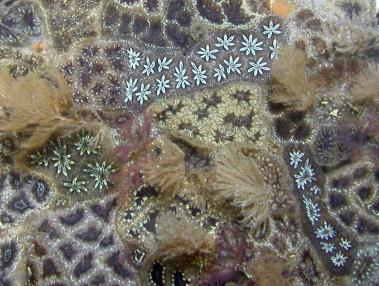

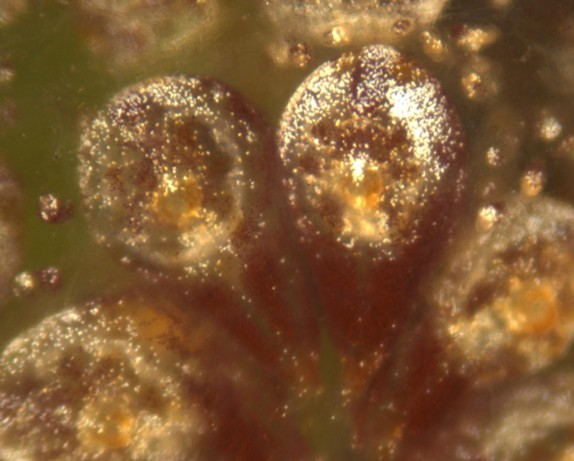
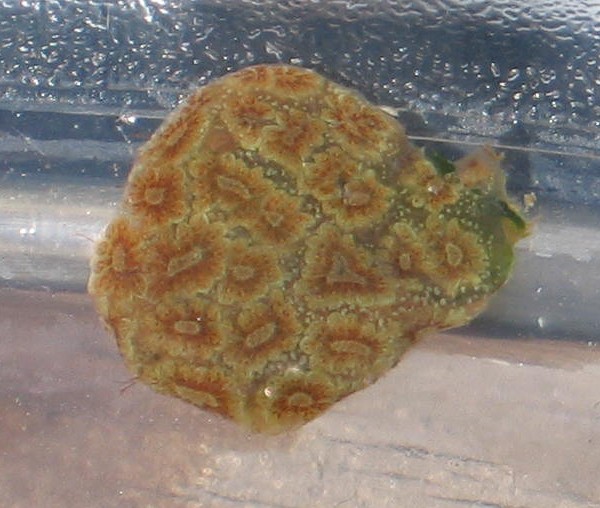
Botryllus schlosseri collected from Provincetown, MA. Gold-rust-gold mosaic color variant with rust colored pigment bands between gold branchial and atrial siphons. Digital photograph of colony growing on Ulva sea lettuce using natural outdoor lighting .
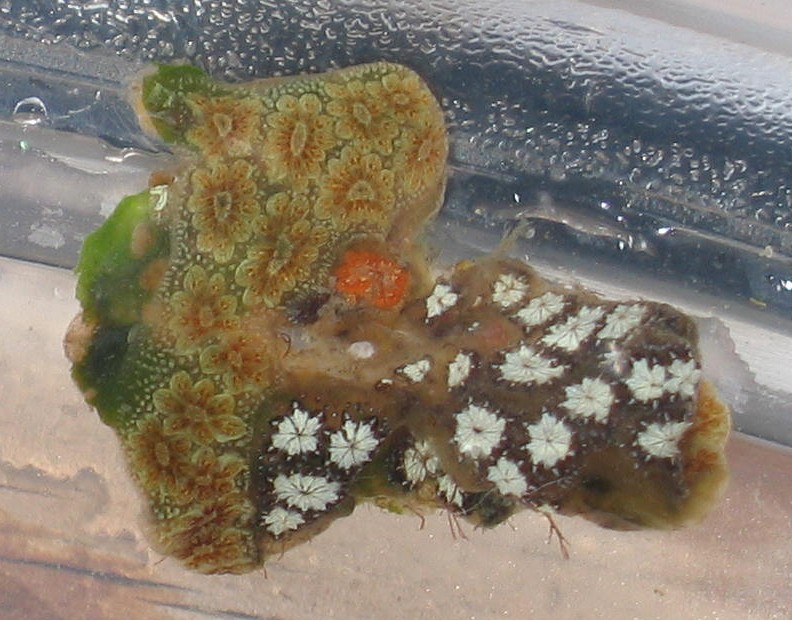
Two color variants of Botryllus schlosseri collected from Provincetown, MA. Gold-rust-gold mosaic color variant growing next to a purple-white variant.
The zooids of Botryllus schlosseri are arranged in star shaped clusters. Some colonies actually have white or yellow star patterned pigments bands running from the branchial siphon to the common atrial opening. Other colonies exhibit subtle coloration that blends in with other organisms because the pigment bands are the same or darker color. These colonies form a mosaic pattern. Photo from SERC benthic Ecology Lab website. Hundreds of beautiful images can be found by performing a Google Images search.
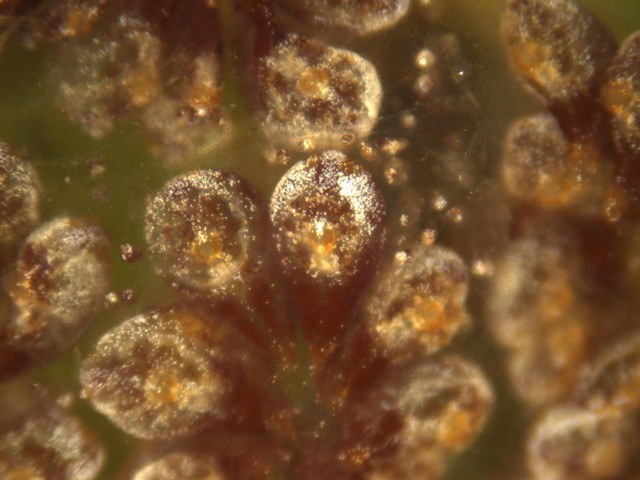
Botryllus schlosseri collected from Salem Sound, MA. Zooids have cream-colored pigmented cells around the orange colored branchial siphons. These pigmented cells do not extend through the pigment band to the atrial opening. Some internal body parts also appear orange. Pigment bands appear a deep burgundy. The colony was growing on algae which gives the background an olive-green appearance. The color of colonies under the microscope slightly varies from what is seen with the naked eye. StereoZoom dual fiber optic lighting from above the colony.
StereoZoom Color Variant Portraits


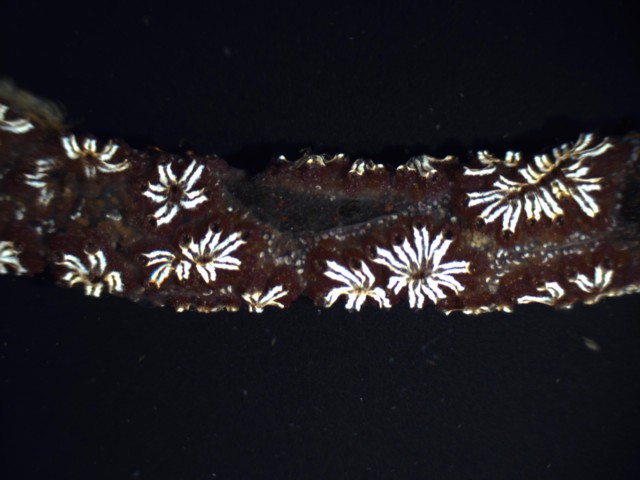
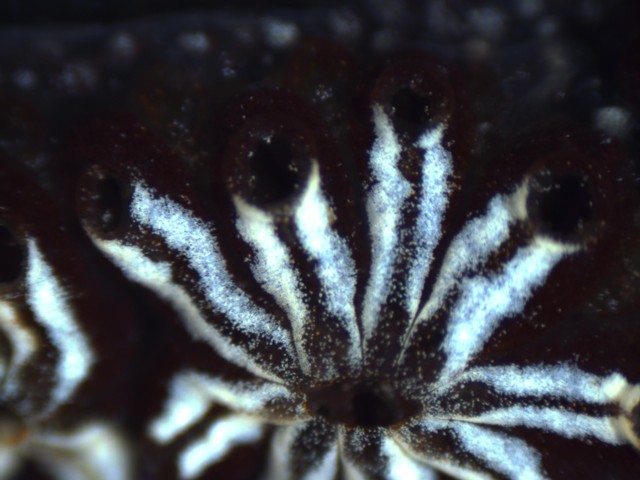
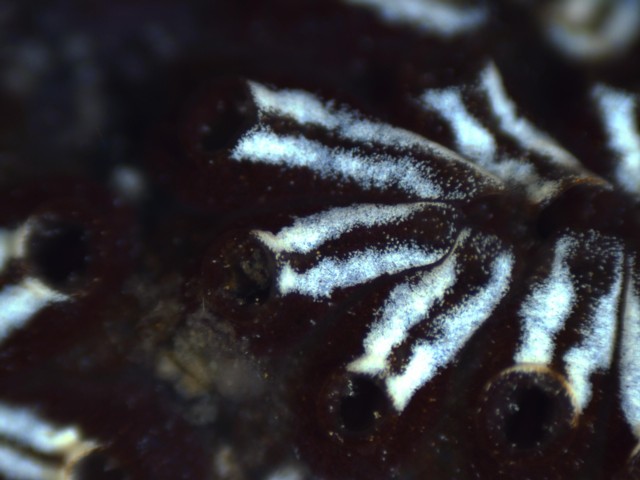
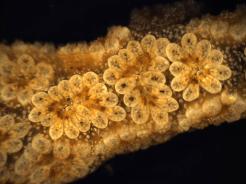
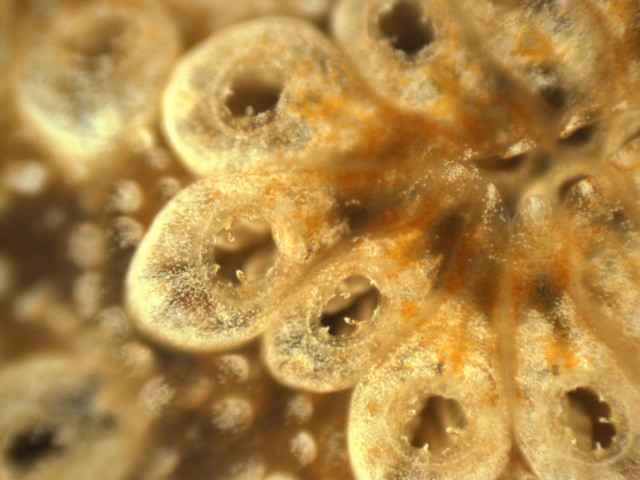
Botryllus schlosseri growing on Codium collected from MacMillan Wharf, Provincetown, MA. White Star with parallel pigment bands.
Botryllus schlosseri burgundy mosaic variants from Provincetown, MA.
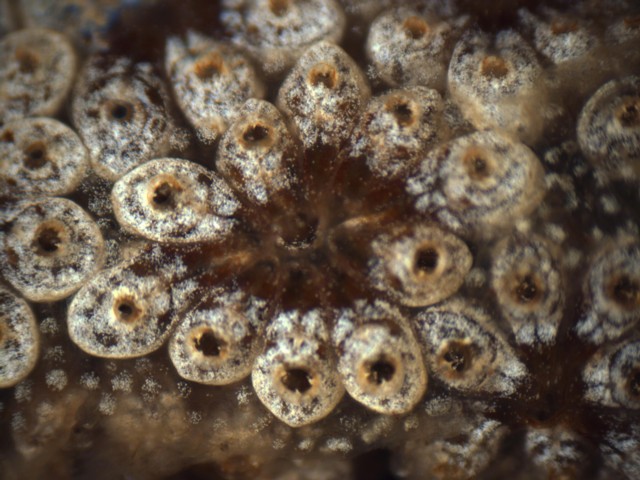
White_burgundy mosaic variant.




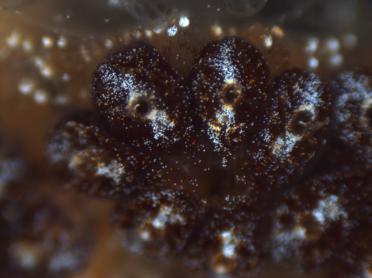
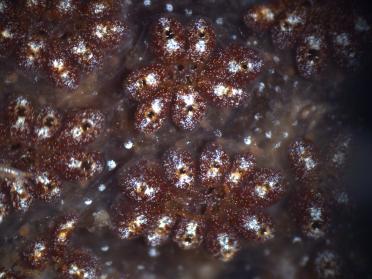
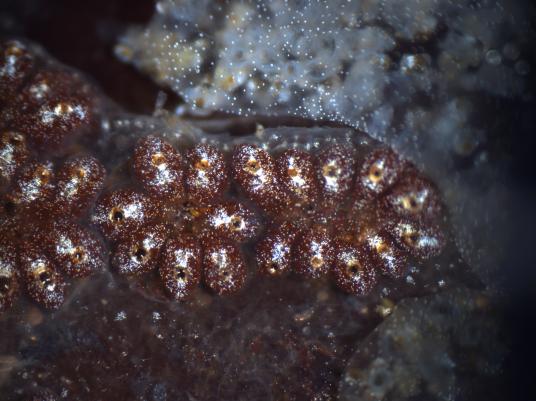

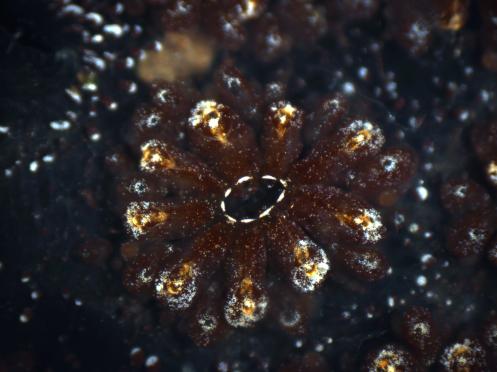
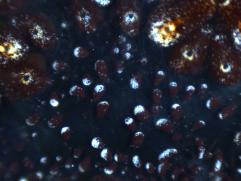
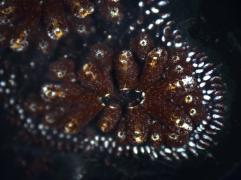
Left, 9-zooid cluster of Botryllus schlosseri on red algae, MacMillan Wharf, October, 2011. Scattered white pigment cells encircle the orange-colored branchial siphon, more heavily on the outer side of the cluster. The common excurrent siphon is outlined by a dashed ring of white pigment cells formed by a short, white stripe at the atrial opening of each zooid. Stereozoom 1.5 x 10x.
Right, same colony as shown at left, the zooids share a common vascular system that consists of blood vessels and enlarged club-shaped vascular ampullae along the periphery. The ampullae have the capacity to reconstruct the colony by vascular budding if all the zooids are lost. Top, ampullae define the edge of the colony and separate clusters of zooids. Bottom, white pigmented cells concentrate at the distal ends of white-capped burgundy ampullae.

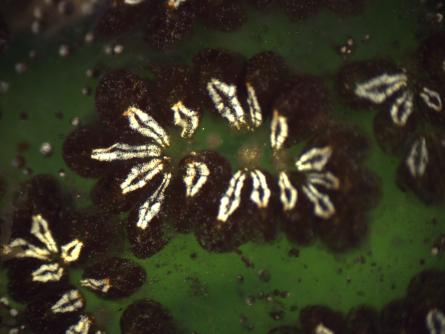
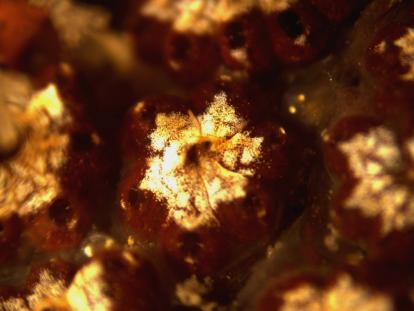
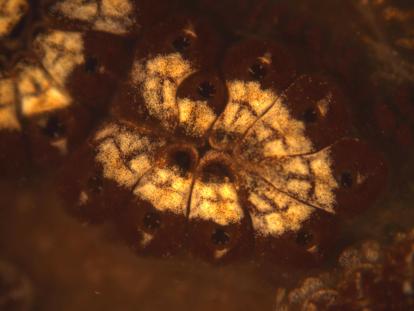
Botryllus schlosseri on the green alga, Ulva, Provincetown, September, 2011. Green back-lighting through the alga clearly outlines the zooids. White pigmented cells for a pair of curved bands betwween the siphons giving the bandws a daisy-star appearance. Stereozoon 1.0 x 10x objective.
Botryllus schlosseri on red algae, Provincetown, September, 2011. White pigmented cells form a short stripe through the branchial siphons above the endostyle and dorsal lamina. Pigmented cells also lightly speckle the body of the zooids. Branchial siphons are orange-colored. Bottom, part of a colony encounters a colony of Diplosoma listerianum.
Botryllus schlosseri on Codium, MacMillan Wharf, September, 2011. White pigment cells form a shield-shaped pattern filling the space between the branchial and excurrent siphons of the cluster. The zooids also have a tiny patch of white cells on the opposite, outer side of the branchial siphon at the anterior end of the endostyle. Othewise, the branchial siphons are burgundy like the rest of the zooid body. Stereozoom 3.0 x 10x